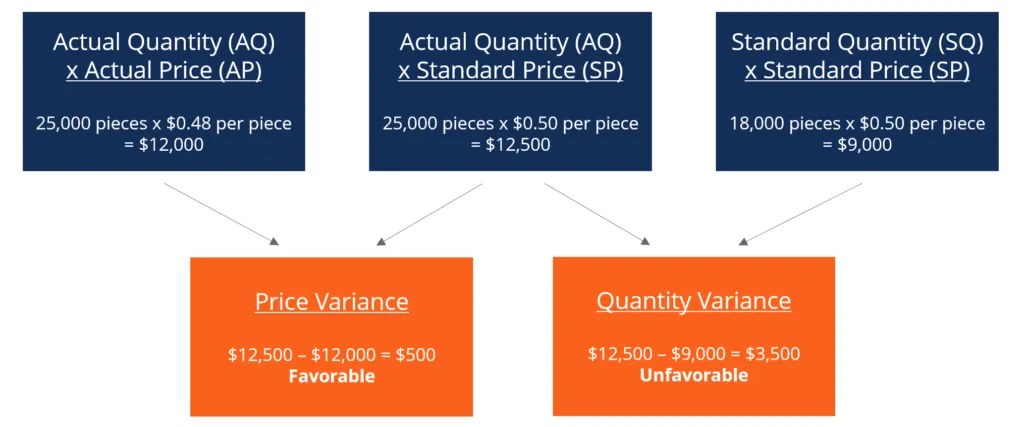Variance accounting plays a crucial role in financial analysis by helping businesses compare actual performance against budgeted expectations. However, many businesses make critical mistakes in their variance analysis, leading to inaccurate financial insights, poor decision-making, and financial mismanagement. Identifying and correcting these errors is essential for maintaining accurate financial records and improving business performance.
In this blog, we will explore common mistakes in variance accounting and provide actionable strategies to avoid them.
1. Misinterpreting Variance Causes
The Mistake:
One of the most common errors in variance accounting is misinterpreting the root cause of a variance. Businesses often assume that a positive variance (favorable) is always good and a negative variance (unfavorable) is always bad. However, this is not always the case.
How to Avoid It:
- Conduct a detailed analysis to understand whether variances result from external factors (e.g., market changes) or internal inefficiencies.
- Investigate whether positive variances indicate cost-cutting at the expense of quality or efficiency.
- Use a combination of financial and operational metrics to get a clearer picture of variance causes.
2. Ignoring Small Variances
The Mistake:
Some businesses overlook small variances, believing they are insignificant. However, minor discrepancies can add up over time and indicate larger systemic issues.
How to Avoid It:
- Regularly monitor all variances, regardless of size.
- Use trend analysis to identify recurring small variances that may lead to bigger financial problems.
- Implement internal controls to prevent minor discrepancies from escalating.
3. Failing to Investigate Timing Differences
The Mistake:
Timing differences in revenue recognition or expense recording can create misleading variances. For example, a delayed expense might appear as a favorable variance in one period but cause a large unfavorable variance in the next.
How to Avoid It:
- Align variance analysis with cash flow and accrual accounting methods.
- Ensure that revenue and expenses are recorded in the correct period.
- Reconcile accounts regularly to correct timing discrepancies.
4. Relying Solely on Percentage-Based Variance Analysis
The Mistake:
Many businesses rely too heavily on percentage-based variance analysis without considering absolute dollar values. A small percentage variance in a high-cost item can have a greater financial impact than a large percentage variance in a lower-cost item.
How to Avoid It:
- Analyze variances in both percentage and absolute terms.
- Prioritize high-value variances that have a significant impact on financial performance.
- Use a weighted approach to variance analysis to focus on the most financially impactful items.
5. Lack of Communication Between Departments
The Mistake:
Variance accounting often involves multiple departments, including finance, operations, and procurement. Lack of collaboration can lead to inaccurate variance explanations and poor corrective actions.
How to Avoid It:
- Encourage cross-departmental discussions to understand variance causes better.
- Use financial dashboards and reports that are accessible to key stakeholders.
- Schedule regular variance review meetings to align financial strategies across departments.
6. Not Adjusting for Seasonal or Market Changes
The Mistake:
Many businesses fail to adjust their variance analysis for seasonal trends or market fluctuations, leading to misleading interpretations.
How to Avoid It:
- Incorporate historical data to account for seasonality and market trends.
- Compare variances against industry benchmarks.
- Adjust financial models to reflect cyclical trends and external economic conditions.
7. Inconsistent or Infrequent Variance Reviews
The Mistake:
Some businesses conduct variance analysis too infrequently or inconsistently, making it difficult to identify patterns and implement timely corrective actions.
How to Avoid It:
- Perform variance analysis regularly (monthly, quarterly, or annually, depending on business needs).
- Establish a standardized process for reviewing and reporting variances.
- Use automated accounting software to track variances consistently.
8. Ignoring Non-Financial Factors
The Mistake:
Variance accounting should not be viewed in isolation from non-financial factors such as customer satisfaction, employee productivity, or supplier performance.
How to Avoid It:
- Integrate operational metrics with financial variance analysis.
- Consider external factors, such as changes in customer demand or supply chain disruptions, when analyzing variances.
- Use a balanced scorecard approach to evaluate overall business performance.
Conclusion
Variance accounting is a powerful tool for financial management, but common mistakes can lead to misleading insights and poor decision-making. By understanding and addressing these errors, businesses can improve the accuracy of their variance analysis, make better financial decisions, and enhance overall profitability.
Implementing best practices, fostering cross-department collaboration, and leveraging financial technology can help businesses optimize their variance accounting processes and drive long-term success.

















